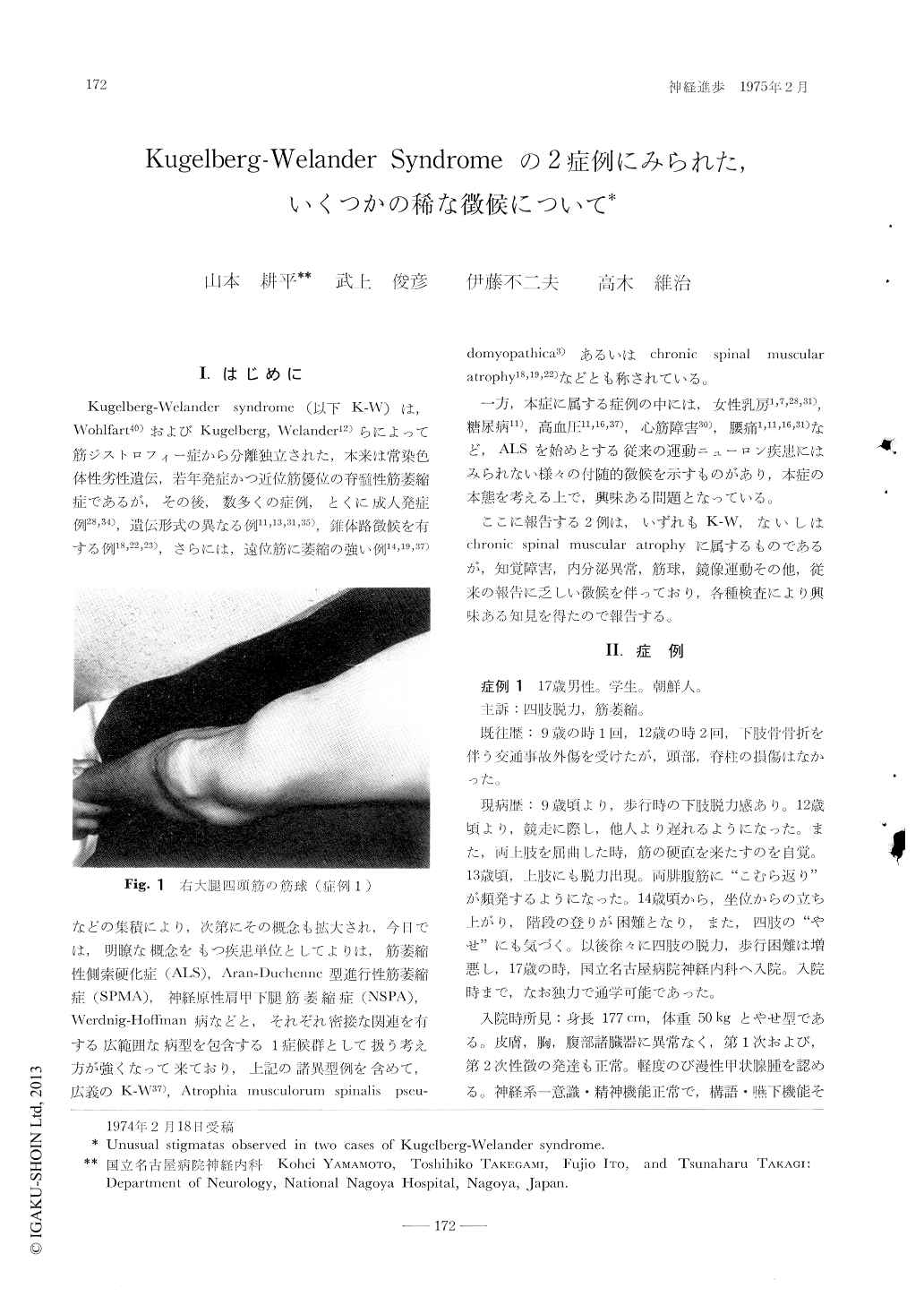Japanese
English
- 有料閲覧
- Abstract 文献概要
- 1ページ目 Look Inside
I.はじめに
Kugelberg-Welander syndrome(以下K-W)は,Wohlfart40))およびKugelberg,Welander12)らによって筋ジストロフィー症から分離独立された,本来は常染色体性劣性遺伝,若年発症かつ近位筋優位の脊髄性筋萎縮症であるが,その後,数多くの症例,とくに成人発症例28,34),遺伝形式の異なる例11,13,35),錐体路徴候を有する例18,22,23),さらには,遠位筋に萎縮の強い例14,19,37)などの集積により,次第にその概念も拡大され,今日では,明瞭な概念をもつ疾患単位としてよりは,筋萎縮性側索硬化症(ALS),Aran-Duchenne型進行性筋萎縮症(SPMA),神経原性肩甲下腿筋萎縮症(NSPA),Werdnig-Hoffman病などと,それぞれ密接な関連を有する広範囲な病型を包含する1症候群として扱う考え方が強くなって来ており,上記の諸異型例を含めて,広義のK-W37),Atrophia musculorum spinalis pseudomyopathica3)あるいはchronic spinal muscular atrophy18,19,22)などとも称されている。
Two cases of Kugelberg-Welander syndrome with some unusual signs were reported.
Case 1, a seventeen years old male, first noticed fatigue of the legs at his age of nine, which had then slowly progressed. During about five years before admission, his arms became increasingly weak and intermittent muscle cramps occurred mainly on the calves and on the upper arms.
Physical examinations disclosed generalized muscular wasting and weakness which was dominant on the proximal parts of the limbs.

Copyright © 1975, Igaku-Shoin Ltd. All rights reserved.


